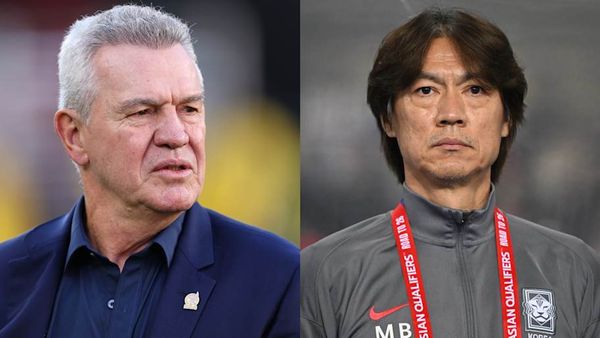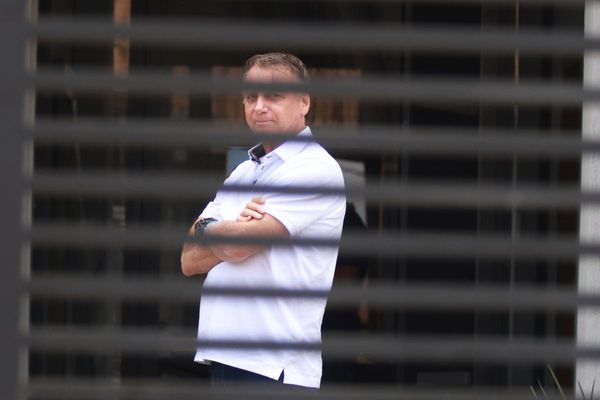One of New Zealand's most revered leaders — and one of the country's most iconic photos — has been immortalised in bronze in her home town of Panguru.
Many hundreds of people travelled to the remote North Hokianga settlement to see a statue of Dame Whina Cooper unveiled this morning.
The sculpture - made by Jimi Hills, of Ngāti Porou, Tūhoe and Te Whānau a Upokorehe - is based on the famous photograph by Michael Tubberty showing Dame Whina, who was 80 at the time, holding the hand of her three-year-old granddaughter Irenee Cooper as the pair left Te Hapua at the start of the 1100-kilometre Land March in 1975.
READ MORE:
• Trailblazers: Dame Whina Cooper
• 1951, Whina Cooper: Mother of the nation
• 1975, Whina Cooper: A voice to be heard
• Maori land march - 40 years on
The statue, in front of Waipuna Marae, was unveiled by Dame Whina's son Joe Cooper and Prime Minister Jacinda Ardern. Also taking part in the ceremony was Dame Whina's daughter Hine Puru and Irenee Cooper.
Ardern was accompanied by her fiancé Clarke Gayford and daughter Neve, who will turn 2 in June, and took part at the request of the Cooper family.
/arc-anglerfish-syd-prod-nzme.s3.amazonaws.com/public/DJVGRL3ECVGMLN4GN2C4PYRJN4.jpg)
Also present was the biggest delegation of politicians Panguru, population 471, has ever seen.
Māori-Crown Relations Minister Kelvin Davis said his office had driven the project, after making sure the Cooper whānau wanted it, as a way of celebrating Aotearoa's Māori heroes.
''It's an apt way to commemorate Dame Whina. It's 45 years since the Land March and it's a wonderful occasion not just for North Hokianga, but all of New Zealand.''
Davis described her as ''a fierce kuia who pursued the interests of her people and had the ears of politicians''.
Other MPs taking part in today's ceremony included Deputy Prime Minister Winston Peters, regional Economic Development Minister Shane Jones, Māori Development Minister Nanaia Mahuta, Tāmaki Makaurau MP Peeni Henare, and many others.
/arc-anglerfish-syd-prod-nzme.s3.amazonaws.com/public/SPBBE34RFZC4FFNBFMPD3DF7G4.jpg)
Te Rarawa chairman Haami Piripi said a powerful and prophetic speech at the opening of the 1990 Commonwealth Games cemented Dame Whina's reputation as Te Whaea o Te Motu, or the Mother of the Nation.
Her father Heremia Te Wake was a paramount chief so she grew up among prominent people, then became a community leader in her own right.
She founded the Māori Women's Welfare League, became a good friend of Prime Minister Peter Fraser, helped shape legislation relating to Māori, and played an important role in community development in Auckland.
''But she really hit her straps as a leader with the Land March. She gained the heart of the nation, not just Māori but Pākehā as well.''
''She was responsible for the phrase 'Not one more acre' — if there was a single slogan that slowed down the loss of Māori land, it was that one. It became a catch-cry for all of us. To galvanise the Māori nation into a march that large and that significant was really an awesome legacy.''
Piripi said Dame Whina was frank — too frank for some people — and knew how to break the rules without breaking them.
''She was the first northern women I knew to speak on the marae. I've seen her intimidate kaumatua, I've seen her correct politicians, but she was also very nurturing of young people she felt had the right ideas. She was a real icon.''
The annual hikoi from Cape Reinga to Waitangi took a detour to Waipuna Marae today, as members of the Ihumatao occupation.
In 1991 Dame Whina was appointed to the Order of New Zealand, the nation's highest honour. She died in 1994, aged 98.
Davis said the event was timely because a discussion in the media late last year had lamented the lack of statues to Māori.
There were busts of Te Rauparaha in Otaki and Princess Te Puea at Turangawaewae Marae, and statues of Kupe in Wellington and Pania of the Reef in Napier, but few others, he said.







